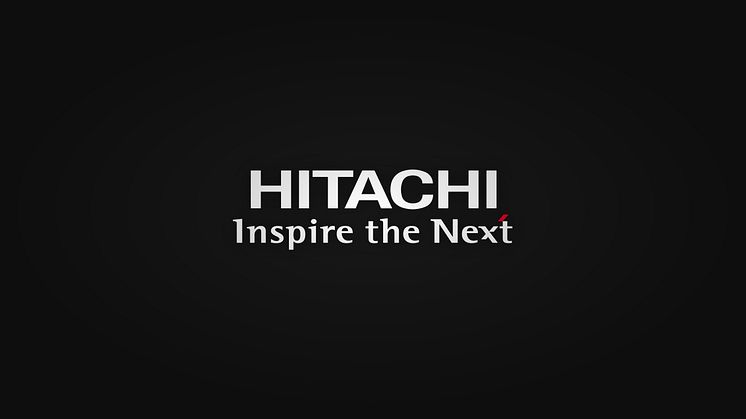Press release -
Hitachi Receive International Certification in Wireless Signaling Systems for Urban Transport
Hitachi Receives SIL 4 RAMS Certification, the Highest Safety Level in International Safety Standards, from a European Certification Agency
Tokyo, Japan, February 20, 2014 --- Hitachi, Ltd. ( TSE:6501, "Hitachi") announced today that it received Safety Integrity Level 4 (SIL 4*1), an international safety standard*2 for reliability, availability, maintainability and safety (RAMS*3) in wireless signaling systems for urban transport. SIL 4, the highest safety level attainable, conforms with the IEEE 1474 Standard for Communications-Based Train Control (CBTC*4) Performance and Functional Requirements. This is the first time*5 that a Japanese company has received SIL 4 certification from the European Certification Agency. CBTC refers to signaling systems for suburban trains, subways, monorails, and other forms of urban transport. When wireless communication is used to transmit control information or information on trains' positions, there is no need to install train detection facilities on the ground. This makes it possible to dramatically reduce costs; for example, the costs of installing and maintaining cables along the railway lines. Furthermore, because the trains' positions can be monitored in real time, it is possible to dynamically maintain the minimum allowable intervals between each train as required to ensure safety. This in turn enables increased transport capacity through high density operations. These systems can also be applied to unmanned train operations. Hitachi decided to adopt CBTC on Line 1 of the Ho Chi Minh City metro, for which it received an order in June 2013. Hitachi will continue to roll out the railway signaling system business on a global scale, by expanding sales of its CBTC systems.
In recent years, there has been a growing demand for conformance with international standards during bids for overseas railway signaling system projects, and for products that have received certification from public agencies for international safety standards. There are two main types of international standards for railway signaling systems: CBTC, which covers urban transport systems, and ETCS*6, which covers long-distance, transport between different cities. Hitachi released on-board signaling equipment in conformance with ETCS standards in December 2013. CBTC has been adopted on approximately 100*5 train lines worldwide, mostly suburban trains, subways, and monorails. Hitachi delivered CBTC systems for the Chongqing Rail Transit Line 3 in China, for which it received an order in February 2009. Commercial operations on that line began in September 2011.
Hitachi has obtained RAMS certification for a variety of CBTC systems, including Automatic Train Supervision (ATS), which transmit instructions for setting train routes; interlocking systems, which set and cancel train routes based on instructions from ATS; Automatic Train Protection (ATP) systems, which detect trains' positions and control the distance between those trains; and Automatic Train Operation (ATO) systems; as well as for wireless communication systems that transmit information between trains and ground facilities. Hitachi has obtained SIL 4, the highest safety level available among international safety standards, for its ATP systems and interlocking equipment, which are particularly important in terms of ensuring safety.
With the receipt of this and other certifications, Hitachi will continue to strengthen its business in railway signaling markets around the world, thereby expanding its railway systems business on a global scale.
[image]Outline of CBTC system configuration *1Safety Integrity Level 4 (SIL 4): SIL is a measure of safety defined in international standards on a scale of Level 1 to Level 4. SIL 4 is the highest safety level attainable.*2Segments of the IEC61508 international safety standard were modified into three categories to apply specifically to railway systems in Europe: EN50126 (RAMS); EN50128, which covers railway related software applications; and EN50129, which covers system safety. These three standards were later redefined as the international IEC standards IEC62278, IEC62279, and IEC62425, respectively.*3Reliability, Availability, Maintainability and Safety (RAMS): RAMS stipulates activities to be conducted in all phases of railway operations, from the conceptualization of railway systems to disposal after use.*4Communication Based Train Control (CBTC): Railway control systems for urban transport. Adopted as part of the IEEE 1474 standard by the Institute of Electrical and Electronics Engineers, Inc.*5As of February 2014. Source: Hitachi survey.*6European Train Control System (ETCS): Refers to train control systems for transport between different cities railways. This standard was adopted in Europe to enable mutual operations among trains operating on routes that cross national borders.
